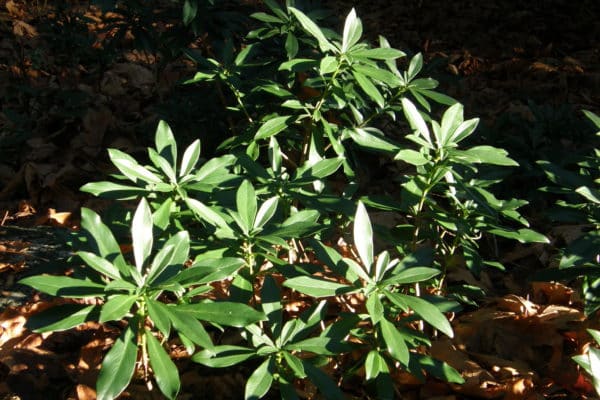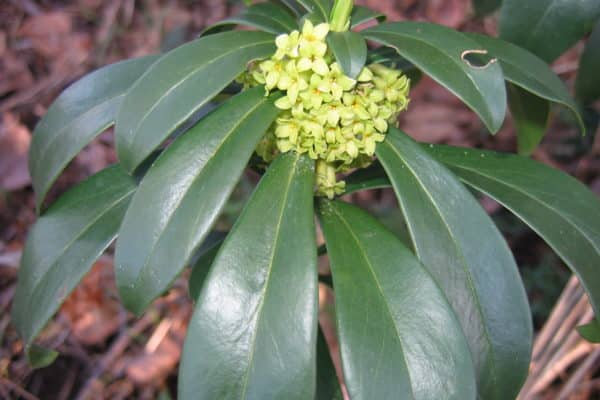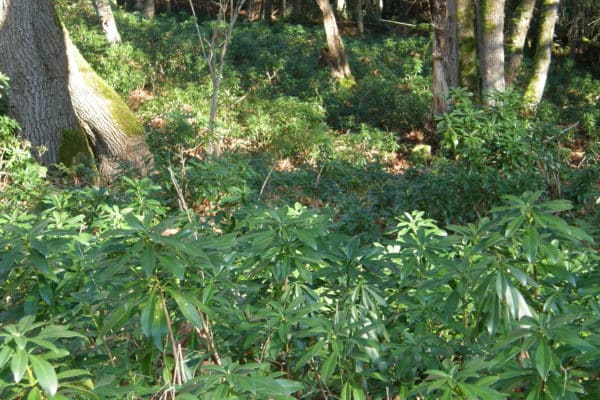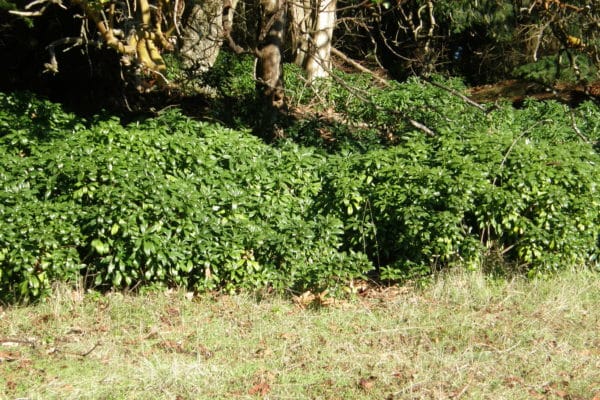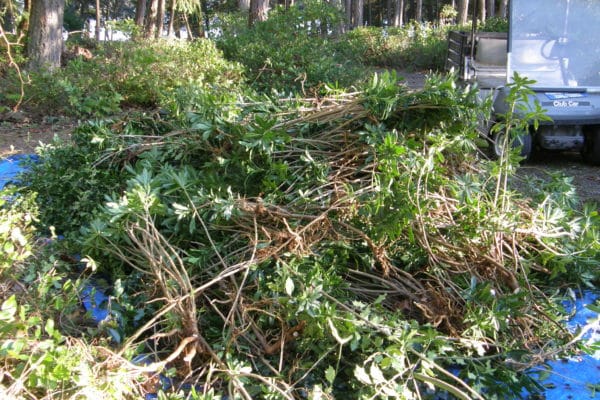Daphne (Spurge-Laurel)
Warning
Daphne is listed as a poisonous plant by the Canadian Poisonous Plants Information System, and as a toxic plant by Worksafe BC. Its toxic sap can cause skin rashes, nausea, swelling of the tongue, and coma.
About This Species
Daphne (Spurge-Laurel) was a popular ornamental in gardens at one time due to its glossy, rhododendron-like leaves and fragrant flowers. It was introduced from it’s native range of Europe, and a small portion of Northern Africa. It is tolerant of both sun and shade and rapidly takes over native vegetation by forming dense thickets in a range of ecosystems. It is especially suited to take over forest understories where it can form dense monocultures and outcompete native vegetations. It can spread through seed or vegetative shoots and its black berries are loved by birds. Daphne is designated as Management species by the BC Provincial Priority Invasive Species List.
How to Identify
Daphne grows to 1.5 m in height in either a single stem, or a multi branching shrub. As it gets taller, only the topmost section of the plant has leaves.
In the spring, axial clusters of tiny, fragrant, light yellow-green flowers form between the leaves. It’s berries are black when mature.
Its leaves are dark green, glossy, oval-shaped and grow in a spiral pattern around the top of the stem.
Take Action
Removal should be undertaken by a professional. Always wear gloves and preferably goggles and a breathing mask to remove. Small plants can be pulled out by hand, but larger plants should be carefully cut just below the soil line with large loppers.
-
If you need advice about invasive species on your property or you are concerned about reported invasives in your local area, contact your local government or regional invasive species organization.

Plantwise
Learn about best practices
A few non-invasive alternatives to plant instead of Daphne (Spurge-Laurel) include:
- Evergreen huckleberry (Vaccinium ovatum)
- Japanese azalea (Rhododendron kiusianum hybrids)
- Oregon grape (Berberis nervosa)
- Tall oregon grape (Berberis aquifolium)
- Winter daphne (Daphne odora)
REPORT TO PROTECT BC’S BIODIVERSITY

Use the app
Observe and report to protect BC’s biodiversity

Report through this website
Use our form to tell us what you’re seeing and where.



